

The Sundarban is a microcosm of the devastating intersection between climate change and child vulnerability. Rising sea levels, intensifying cyclones and saline intrusion are not only eroding land but also childhoods, forcing families into displacement and children into exploitation. With 60% of West Bengal’s coastline disappearing and 32% of the state’s trafficking cases originating from the Sundarbans, climate change has become a child rights emergency.
UNICEF estimates 24 million Indian children are impacted annually by climate disasters, with Sundarbans’ children bearing the brunt due to compounded socio-economic fragility. Below, we unravel the layered crises faced by these "climate refugee children"
Displacement and Fractured Families
Cyclones like Amphan (2020) and Yaas (2021) have displaced 300,000+ people in the Sundarbans, triggering chaotic migration. Children are often left behind with elderly relatives or sent to cities for work, severing familial bonds. This disruption leads to 65% school dropout rates among climate-affected households and exposes children to trafficking. Survivors like Afza*, kidnapped at 12 and forced into sex work after her family lost their home to Amphan, exemplify how climate-induced poverty fuels exploitation. A 2023 survey revealed 16% of Sundarbans families resorted to child marriage or labor post-disasters.
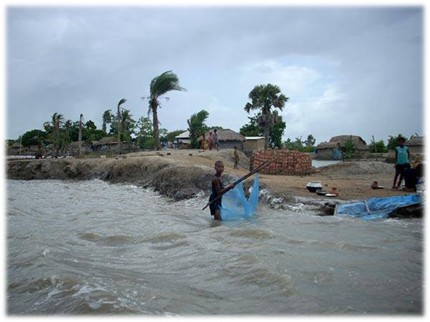
Health and Nutrition Collapse
Salinization has rendered 53% of coastal farmland infertile, destroying crops and contaminating freshwater. Cyclone Amphan flooded 17,800 hectares with saltwater, causing long-term agricultural collapse. The consequences are dire: 51% of children suffer malnutrition, while 89.5% of households report waterborne diseases like diarrhea —the leading cause of child mortality in the region . Children forced to drink saline water (reaching 10 ppt in some areas) face chronic health crises.
Mental Health and Trauma
Repeated disasters inflict invisible scars. Children in temporary shelters exhibit fear of storms, aggression and withdrawal. Adolescents like Surjyo*, who dropped out after Cyclone Amphan to work in Kolkata at an eatery joint, struggled to reintegrate into education. Others, like Mamta*, contemplate early marriage or fleeing due to despair. UNICEF links climate trauma to 20% lower cognitive performance in affected children.
Systemic Failures and Policy Gaps
India lacks legal recognition for "climate refugees," leaving displaced children unprotected. Compensation takes 2–4 years to reach survivors and West Bengal’s disaster management allocates < 1% to child-focused rehabilitation. Climate policies ignore child-specific needs, such as mental health support or anti-trafficking measures. As health economist Barun Kanjilal warns, "Climate change is paving the way for a new kind of slavery. "
A Lost Generation
Without immediate intervention, the children of the Sundarbans risk becoming a lost generation, trapped in cycles of climate-induced vulnerability. Cyclical poverty perpetuates as repeated climate shocks push families deeper into debt, forcing children into labor to supplement household incomes. Urban exploitation looms large, with unplanned migration to cities like Kolkata exposing displaced children to hazardous informal work in construction sites, sweatshops, ragpickers and domestic servitude. Perhaps most insidiously, unaddressed intergenerational trauma from repeated disasters and displacement threatens to perpetuate psychological scars across generations, undermining children's ability to break free from this cycle of vulnerability.
Call to Action for Sundarbans' Children
This escalating crisis demands urgent, child-centered climate justice. First, legal recognition of climate-displaced children must be incorporated into national policies like the National Action Plan on Climate Change (NAPCC) to ensure protection and rights. Second, investment in climate-resilient infrastructure, including storm-proof schools and clean water systems, could safeguard children's education and health. Third, integrated protection systems that link anti-trafficking networks with climate adaptation programs are critical to shield displaced children from exploitation. With the IPCC projecting that 11% of the Sundarbans could disappear by 2050, the window to protect these children is closing rapidly—action cannot wait. The alternative is the sacrifice of an entire generation to rising tides and systemic neglect.
Note: Names marked with * are pseudo names of children to protect identities
In the face of escalating climate crises, SEED has adopted a comprehensive, multi-layered approach to ensure children from displaced and marginalized communities are not left behind. This approach recognizes that education alone cannot uplift a child without addressing the interlinked social, psychological and environmental vulnerabilities they face. SEED’s model stands on five interdependent pillars, each reinforcing the other to create lasting impact.
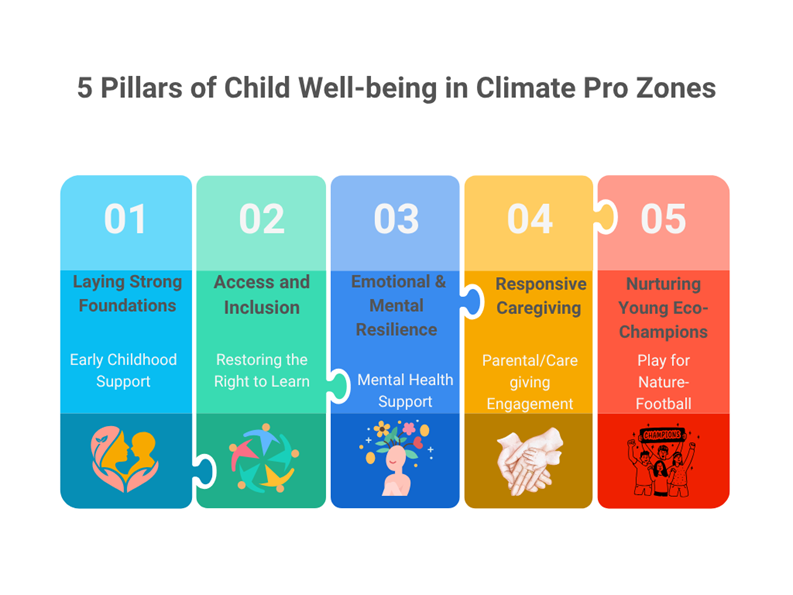
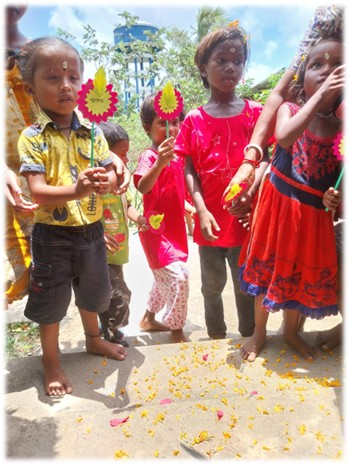
SEED’s Early Childhood Care Centres (ECCCs) in climate-affected regions of the Sundarbans are designed as safe, nurturing spaces where children aged 2–6 years can begin their journeys despite the challenges of displacement, climate induced poverty and disrupted caregiving. These centres focus on foundational literacy, numeracy and play-based learning to prepare children for school, especially those from families affected by migration, salinity intrusion and extreme weather events. Alongside education, children receive regular nutritious meals, nutritional supplements, deworming, nutritional assessments and health check-ups, addressing chronic undernutrition and promoting overall physical well-being in communities where public health infrastructure is weak or absent.
What sets SEED’s model apart is its holistic integration of emotional and parental support. Trained facilitators use music, storytelling and creative play to build children’s emotional resilience, while regular sessions with parents and caregivers promote responsive parenting, home hygiene and nutritional practices. By bridging early learning with health, mental well-being and caregiver engagement, SEED’s ECCCs don’t just prepare children for school — they restore stability, strengthen families and create a protective environment for children to grow and thrive in the face of climate vulnerability.
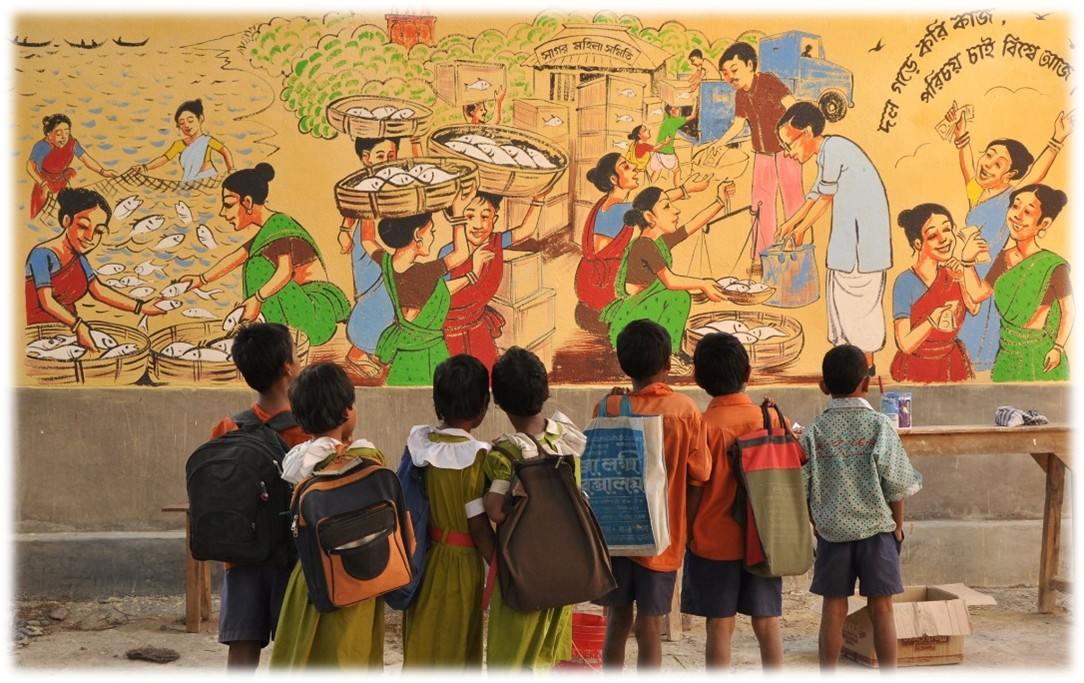
This pillar ensures that all children — regardless of climate induced displacement or socio-economic background — have equitable access to education. This includes identifying out-of-school children, especially from climate refugee families, migrant workers, fisherfolk, ragpickers and sanitation workers, and enrolling them into Non-Formal Education (NFE) centres.
For example, in erosion-prone islands like Ghoramara and Sagar, SEED has set up two NFE centres (Shiksha Kendra) that serve as transitional learning spaces for children whose formal education has been disrupted by displacement or disaster. These centres provide remedial & bridge education and foundational literacy and numeracy (FLN) support, enabling children to re-enter government schools at appropriate age levels. In parallel, SEED also initiated localized learning support programs for children of fisherfolk, helping prevent long-term dropouts.
In urban fringe settlements of Kolkata, targeting migrant families from Sundarban and children of sanitation workers and ragpickers — often denied education due to discrimination and irregular working hours of parents — are brought into the fold through flexible community-based classes. These interventions ensure that the most invisible children are included in the education landscape.

SEED understands that children growing up amid displacement, poverty or the absence of stable adult care often carry unseen emotional burdens. ECCCs and NFEs incorporate mental health and psychosocial care through trained facilitators who use art, music, movement and free play to help children express feelings and build emotional resilience.
Safe, predictable routines and empathetic caregiving provide children with a sense of security — essential for healing and healthy emotional development.
Recognizing that a child’s development is deeply shaped by their home environment, SEED places strong emphasis on parental involvement and caregiver education. Monthly parent meetings, home visits, and workshops equip caregivers — especially mothers — with knowledge on responsive parenting, nutrition, health, and early stimulation. These sessions also address challenges like alcohol abuse, domestic violence, and migration-related disruptions that often hinder consistent parenting in vulnerable households. By empowering caregivers, SEED ensures that early learning continues beyond the centre walls.
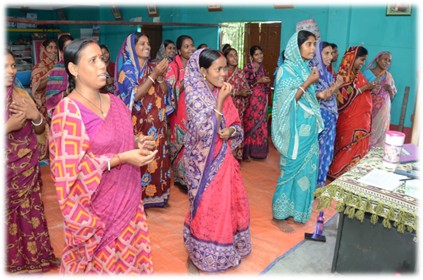
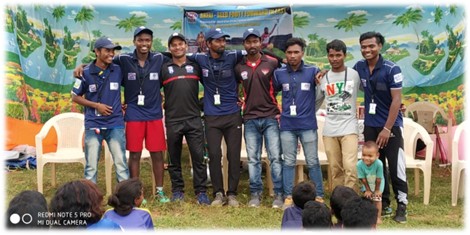
In the climate-sensitive Sundarbans, where rising sea levels and extreme weather events disrupt both ecosystems and human lives, SEED’s Play for Nature initiative is turning the power of sport into a movement for environmental resilience. Targeting young adults aged 12 to 18 years, this initiative uses football as a dynamic tool to build life skills, raise awareness on climate change and cultivate a sense of responsibility toward biodiversity and community well-being.
Football sessions are designed not just to develop athletic ability, but to instill values such as teamwork, discipline, leadership, and resilience — all essential qualities in regions coping with climate-induced stress. During these sessions, youth also participate in climate-focused conversations and games that link their lived experiences — like waterlogging, salinization or loss of forest cover — to larger environmental challenges. Through community tournaments, “green pledges,” and peer-led discussions, they become ambassadors of change within their schools and villages.
What makes Play for Nature transformative is its ability to combine sport, learning and action. Youth groups take part in mangrove plantation drives, cleanliness campaigns and street plays focused on sustainable living. As they learn to work as a team on the field, they also learn to collaborate off the field — advocating for water conservation, reducing plastic usage and spreading awareness about disaster preparedness.
By channeling the energy and passion of adolescents through football, SEED is nurturing a generation of eco-aware, socially responsible leaders who are not just surviving climate adversity — they’re actively shaping a resilient future for their communities. The initiative delivers powerful environmental and life skills education through play. Youth gain a deep understanding of biodiversity, sustainability and climate action in ways that are participatory and relatable. Though non-formal in nature, this experiential model complements academic learning and builds critical thinking, civic engagement and eco-conscious behaviors among marginalized adolescents. In doing so, "Play for Nature" aligns closely with SEED’s larger mission to ensure holistic development and protection for all climate-affected children.
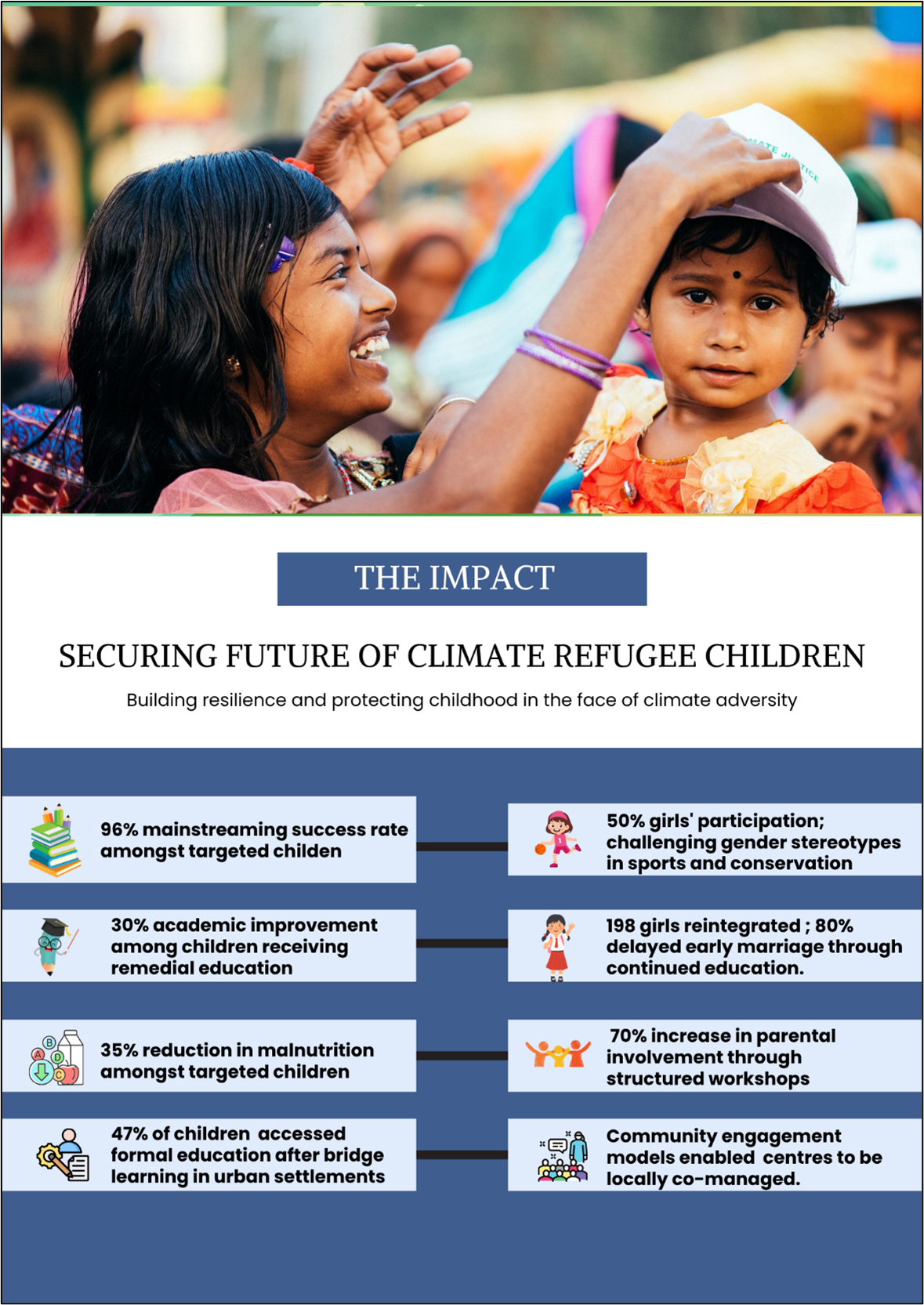



Subscribe to the SEED Newsletter — and be part of the change!